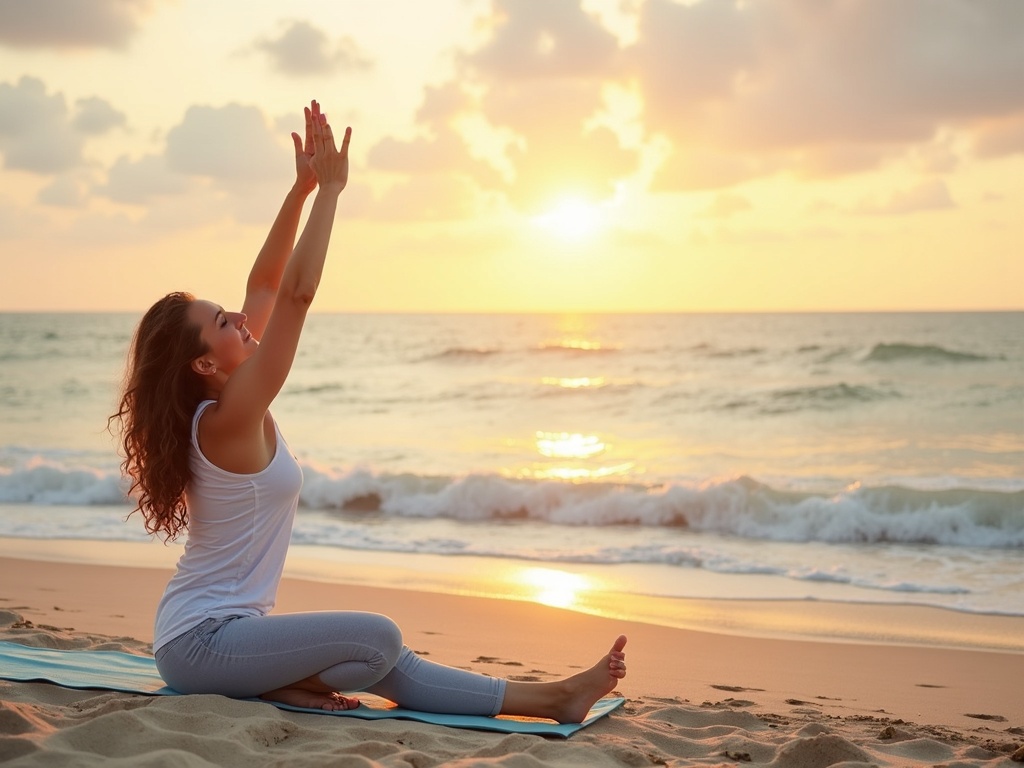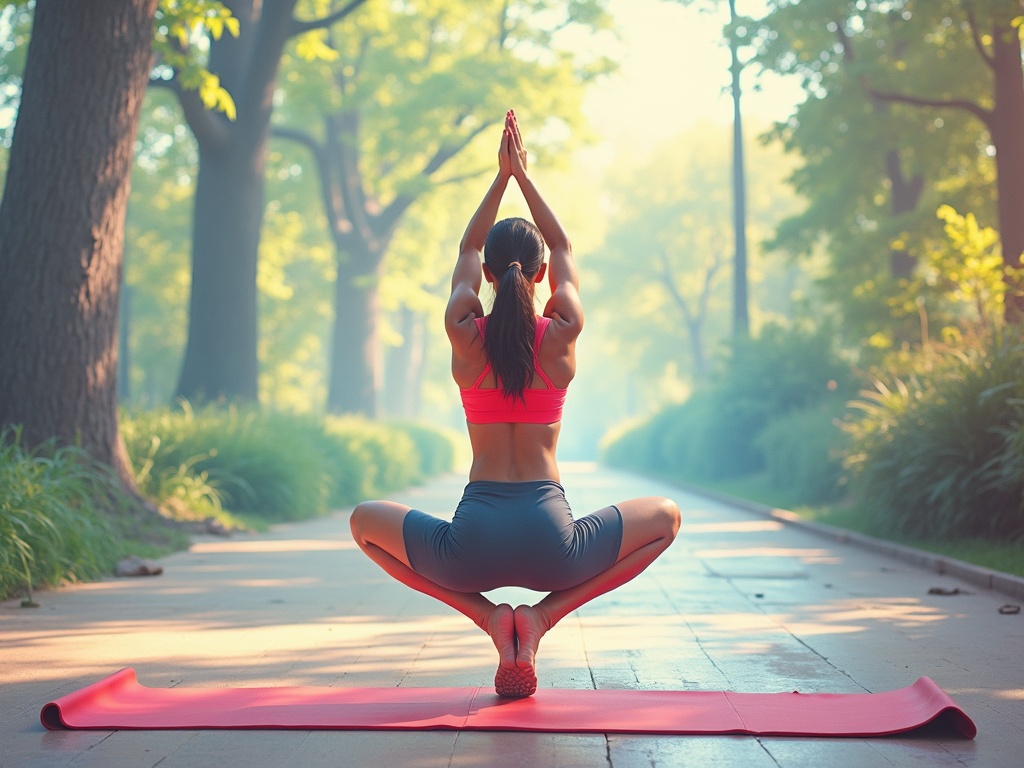Yoga for Arthritis and Joint Pain: Gentle Poses for Relief and Mobility
Do your joints ache with every step? Does stiffness dictate your day? Arthritis can feel like a thief, stealing your comfort and mobility. But what if you could reclaim some of that lost ground with a practice as gentle as it is powerful? Yoga, often perceived as a flexibility challenge, can be a surprising ally in the fight against arthritis and joint pain. Let's explore how this ancient practice can soothe your joints, ease your pain, and help you rediscover the joy of movement.
Understanding Arthritis and Its Impact
Arthritis isn't a single disease, but rather an umbrella term for over 100 different conditions affecting the joints. Osteoarthritis, the most common type, involves the breakdown of cartilage, the cushion between our bones. Rheumatoid arthritis, an autoimmune disease, causes the body to attack its own joints. Both lead to inflammation, pain, stiffness, and reduced range of motion. The impact extends beyond physical discomfort, impacting mood, sleep, and overall quality of life.
Why Yoga? The Science Behind the Relief
Yoga offers a multi-pronged approach to managing arthritis symptoms:
- Reduced Inflammation: Studies suggest yoga can lower levels of inflammatory markers in the body, potentially easing pain and slowing disease progression.
- Increased Joint Mobility: Gentle stretching and movement lubricates joints, preventing stiffness and improving range of motion.
- Strengthened Muscles: Yoga strengthens the muscles surrounding joints, providing support and stability, reducing stress on the joints themselves.
- Improved Balance: Arthritis can affect balance. Yoga poses improve proprioception (awareness of your body in space), reducing the risk of falls.
- Pain Management: Yoga encourages mindfulness and relaxation techniques, helping you cope with chronic pain.
Essential Yoga Poses for Arthritis and Joint Pain
Not all yoga is created equal when it comes to arthritis. Choose gentle, restorative styles and modify poses to suit your individual needs and limitations. Always listen to your body and stop if you feel any sharp or increasing pain.
Mountain Pose (Tadasana)
This foundational pose improves posture and body awareness. Stand tall with feet hip-width apart, engage your core, and lengthen your spine. Imagine a string pulling you up from the crown of your head.
Chair Pose (Utkatasana) – Modified
Strengthens legs and core without putting excessive pressure on knees. Stand with feet hip-width apart, and sit back as if into a chair, keeping your knees behind your toes. You can modify by only bending slightly or holding onto a chair for support.
Warrior II (Virabhadrasana II) – Modified
Stretches hips, groins, and shoulders while strengthening legs and ankles. Widen your stance, turn one foot out 90 degrees and the other slightly in. Bend the front knee over the ankle, keeping the knee aligned with the ankle. Keep the back leg straight and strong. Modify by shortening your stance, or not bending the front knee as deeply.
Triangle Pose (Trikonasana) – Modified
Stretches the spine, hips, and hamstrings. From Warrior II, straighten your front leg and reach forward over your front leg. Hinge at the hip and lower your hand towards your shin, ankle, or the floor. Modify by placing your hand on a block or your shin instead of reaching all the way to the floor.
Bridge Pose (Setu Bandhasana) – Supported
Strengthens the back and opens the chest. Lie on your back with knees bent and feet flat on the floor. Lift your hips off the floor, pressing into your feet. You can modify by placing a yoga block under your sacrum (the bony plate at the base of your spine) for support.
Child's Pose (Balasana).
Gently stretches the hips, thighs, and ankles, while relieving stress and fatigue. Start on your hands and knees. Widen your knees slightly, keeping your big toes touching. Rest your hips on your heels and fold forward, resting your forehead on the floor. Extend your arms forward or rest them alongside your body.
Corpse Pose (Savasana)
A vital relaxation pose. Lie flat on your back with arms at your sides, palms facing up. Close your eyes and focus on your breath. Relax every muscle in your body.
Modifications: Adapting Yoga to Your Needs
The beauty of yoga lies in its adaptability. Don't be afraid to modify poses to suit your individual needs and limitations. This is especially crucial when dealing with arthritis. Consider these tips:
- Use props: Yoga blocks, straps, bolsters, and blankets can provide support, reduce strain, and make poses more accessible.
- Listen to your body: Never push yourself into a position that causes pain. Focus on gentle movement and comfortable stretches.
- Start slow: Begin with shorter sessions and gradually increase the duration as your strength and flexibility improve.
- Focus on breath: Deep, conscious breathing can help relax your muscles, reduce pain, and improve your overall well-being.
- Work with a qualified instructor: A yoga therapist or instructor experienced in working with people with arthritis can provide personalized guidance and modifications.
Creating Your Own Arthritis-Friendly Yoga Practice
Building a home yoga practice can be empowering. Here's how to get started:
- Consult your doctor: Before starting any new exercise program, especially if you have arthritis, it's essential to consult your doctor to ensure it's safe for you.
- Find a qualified instructor: Look for a yoga instructor who is experienced in working with people with arthritis or other joint conditions. A good instructor can provide modifications and guidance to prevent injury.
- Start with the basics: Begin with simple poses and gradually increase the difficulty as your strength and flexibility improve.
- Listen to your body: Pay close attention to your body and stop if you feel any pain. It's okay to modify poses or skip them altogether.
- Be consistent: Aim to practice yoga regularly, even if it's just for a few minutes each day. Consistency is key to experiencing the benefits of yoga.
- Create a comfortable environment: Find a quiet space where you can relax and focus on your practice.
- Use props as needed: Yoga blocks, straps, and blankets can help you modify poses and make them more comfortable.
- Focus on your breath: Deep, conscious breathing can help you relax your muscles and reduce pain.
Beyond the Mat: Complementary Approaches
Yoga is a powerful tool, but it's most effective when combined with other healthy habits. Consider these complementary approaches:
- Healthy Diet: An anti-inflammatory diet rich in fruits, vegetables, and omega-3 fatty acids can help reduce inflammation and pain.
- Weight Management: Losing excess weight can reduce stress on weight-bearing joints.
- Physical Therapy: A physical therapist can help you develop an exercise program to strengthen muscles and improve joint mobility.
- Medication: Work with your doctor to explore medications that can help manage your arthritis symptoms.
The Transformative Power of Gentle Movement
Arthritis may present challenges, but it doesn't have to define your life. Yoga offers a path towards greater comfort, mobility, and well-being. By embracing gentle movement, mindful breathing, and a supportive community, you can reclaim control over your body and rediscover the joy of living. Remember to honor your body's limitations, celebrate its strengths, and approach each practice with patience and compassion. The journey to pain relief and improved mobility starts with a single, mindful breath on the mat.


